I am using the term “Summer Vacation” in a loose sense. We’re home. Since March. Like so many folks these days. But we’re truly making the best of it. It’s summer in Maine, and I’m right where I want to be.
I hope you enjoyed our “Summer Reruns” of the last four Saturdays, which for us, cleared a bit of time for a few summer diversions as we kept up with the business of fabric collage. Despite the pandemic, business doesn’t stop—nor does the call of the garden when it needs to be weeded or watered, or the call of the bay when it’s flat calm and waiting for you to take a paddle in your kayak. So, yeah, we had our little distractions during the past few weeks, but we were also keeping busy.
The big goal of our time off from the blog was a task we had long pushed aside, being too preoccupied with other work—a major update to the Fabric Collage Master Class Manual—so we’ll start with telling you about that accomplishment, then we’ll continue with our Summertime in Maine post. So grab a cuppa and sit back. Hope you didn’t miss us too much. 😉
Fabric Collage Online Master Class Manual Update
We made it clear when we first launched the Master Class in March 2018 that we would be updating it in the future. Why? Well, the fabric collage technique is something that I am continually developing. I don’t teach it the same way I did 10 years ago—or even two years ago. I hope I’m getting better at it.
Our goal, as it was in the beginning, is to provide everything one needs in order to learn fabric collage—in one easy to access online location.
We’ve had two and a half years since the launch of the Manual to think about—and write about—fabric collage. Many of the blog posts we’ve written since then contain information that we hadn’t considered before. The blog, in essence, filled in some holes that we noticed over time.
Tom and I both went through the blog posts written between early 2018 until now, and flagged information we thought could be inserted into the Master Class or could be used as links to pursue for further information as you progress through the Manual.
For example, in the section on Creating Your Image in Fabric Collage, we added information from a post discussing the concept of “sequence”—the order in which, or the place in which, a collage image is begun. It’s something I talk about in the course of an in-person class, but had never written specifically about that approach in a blog post until earlier this year. In fact, we expect to elaborate even more on this idea in future posts. But for now, the basic information about “sequence” is newly inserted (in the appropriate location) within the Master Class Manual.
We also took inspiration for the update from other sources. For example, the major overhaul we did on the Backgrounds section of the Master Class was inspired by this year’s Thursday Night in My Studio Live! sessions on backgrounds. The information developed in that series of presentations was adapted to fit into the Master Class—incorporating new background examples (though without the live demonstration videos of the Thursday Night recordings).
We also provided new links to posts on finding or reigniting inspiration. We inserted videos clarifying ideas, tools or techniques. We added more guidance on choosing fabrics for fabric collage. Overall, we edited and rewrote what had been written before while integrating the new information.
If you own the Fabric Collage Master Class Manual these updates are at no extra cost and already in place. The next time you log in the new information will be there. Future updates will also be free and included in the base price.
A New Quilt for 2020
The fanciful portrait quilt of my son Sam, working title “Blue Moon Sam,” has been in progress since late April. During the last four weeks, work on the quilt basically fell prey to a reclaimed veggie garden and very hungry Monarch caterpillars (more on those later). But I can at least say I’ve begun the second draft.
One small but important change I made recently was in the positioning of the three main elements—the moon (Sam), the earth, and the universe behind them. Specifically I tilted the earth down and to the left (photos above)—it’s not a big thing, but now I’m much happier the way the earth and moon overlap at the top. Best to get those things sorted out earlier rather than later. The new tilt of the earth created a gap on the top edge, quickly filled with fabric scraps from the making of the earth—fine-tuning can come in the next draft.
Next, I wanted to better define the moon’s edge against the universe, which became way to close in color and value as the universe came together in the first draft. That’s ok, fabric collage sometimes evolves like that, and there’s always a solution.
Since Sam’s face itself looked fine against the universe background, I just needed to bring some of those lighter and greener fabrics onto the crescent edge of the moon—as I did in the detail of the top curve of the moon, below.
Sometimes when you stare at something long enough, you figure out what you didn’t even realize bothered you—the curve of the lower part of the crescent. In the photo below, I’ve placed a line of lighter-valued moon fabric to create a new edge, to see if my hunch was correct.
When I squinted my eyes to see how that new lighter edge looked, I did like the curve better, it made just a little more of a “scoop” that matched the upper curve. So then I glued those new shapes in place and trimmed the crescent edge to match, below.
And finally, I figured it was time to think about how big this collage was going to get. The elements were in place, but how far they would extend to the edges was still a bit sketchy. I added some more moon fabric scraps to even up the edge on the right, and tidied up the succulent garden on the bottom (read this blog post for the succulent explanation).
Below is the current image, cropped—not a huge difference from a few weeks ago, but I feel I figured out where I need to go now. Stay tuned for a “Part 2” post in the future.
Gardening and Foraging
Something I never even began to think I’d have time to work on this year, was to reclaim a part of our so-called garden to be an adequate area to plant veggies for the season. The three beds I dug, raked, and weeded are below, in the exposed soil area between my “garden beds.”
In ripping out piles of wood and invasive ground cover, I uncovered some garlic plants which I had forgotten were there. They flourished being able to stretch their long leaves, and when the garlic scapes appeared (the blossoms on squiggly stems), I harvested them. Added with some fresh cut dandelion leaves, they made a wicked dandelion garlic scape pumpkin seed pesto.
Earlier in the summer, we had an extensive crop of dandelions throughout our yard. Since we don’t use any pesticides, they’re ready for the first bees of the year and to be picked by me. Last year I made a batch of a vodka based dandelion aperitif. This year I made two batches—in-progress photos below. A shot glass of the deep rich amber liquor is my treat after signing off from the Thursday Night in My Studio Live! sessions.
The changing landscape of our back field, below. Dandelions proceed the milkweed blossoms, which are followed by Queen Anne’s lace, blanketing the field this year for the first time.
This is our 20th year of living where we do, and back in 2000, friends pointed out milkweed plants and immediately found a couple monarch caterpillars. So began my obsession with preserving as many milkweed plants as possible for the migrating monarch butterflies. Tom long since acquiesced to my request that they don’t get mowed, so islands of milkweed develop over the course of a few weeks every summer, with Tom or I mowing circles around them.
I’ve discovered that when you pinch off the top few leaves of a developing milkweed plant, it will re-sprout two new stems in its place—like you do when growing basil. You can also forage milkweed for food—so I gave it a try this year! Below left is the fresh pinched leaves and a few buds, the photo on the right is the cooked view. The taste is comparable to asparagus, kind of.
Cooking milkweed is much like cooking fiddleheads, the fern sprouts below, a delicacy here in Maine and other northern states. Both greens require boiling twice, changing water in between, to release the toxins. Maybe that’s why I don’t get many takers to join me. I cook them a third time in a recipe of choice. A sauté with fresh garlic bulbs and stems pulled from the garden, chopped dandelion roots, and tamari is amazing over pasta. And a recipe for creamy vegan asparagus soup adapted beautifully with cooked milkweed substituted for the asparagus.
And then there’s the chives. One plant brought with us 20 years ago, has now been divided and it’s descendants line several (overgrown) garden areas. So being inspired by wandering the yard and seeing what I could find for culinary experiments, I made batches of chive pestos and tried out making chive blossom vinegar—see photos below. After sitting a couple weeks, the strained result is a gorgeous shade of red. I’ve been using the garlic vinegar in salad dressings.
A variety of greens, like a dozen different types, was a major planting in my modest garden. I love fresh baby greens—and we’ve had beautiful salads this summer. Along with the greens, I ordered seed packets of edible flowers, in full and flavorful bloom right now. It’s amazing how successful a small plot can be if you’re home to tend and water it (gardening isn’t Tom’s thing). Since I’ve been home the entire growing season for the first time in almost two decades, I’ve been enjoying the distraction and daily mini-harvests.
Another Summer of the Monarchs
And then there’s the monarch butterflies. They seemed to be scarcer, maybe later in arriving on their migration from Mexico this year. We saw a very few at first, and I noted a couple laying eggs on the milkweed. Then, every member of my family just shook their heads when I told them I had found the first hatched caterpillars of the season. They all know that I can’t just leave them out in the field on the milkweed—I need to “rescue” them into netted enclosures. And then caring for the caterpillars becomes the time equivalent of a part-time job.
The first caterpillars I found are pictured above, a couple weeks later and I had collected a few more. At a rough count, I was over 80 at the height of the eating frenzy. Monarch butterflies lay their eggs on milkweed plants only, because that’s all the growing caterpillars eat. In past summer blog posts, I’ve gone into more detail about the monarch life cycle, so I’ll save some time and just send you to this post from last year if you’d like to know more.
Finally, the caterpillars got big and hearty enough to go into their chrysalis stage, hanging expectantly for a few hours (lower left) until poof! magic!, they become a beautiful green chrysalis. And then I don’t have to do anything else for them until they emerge as a butterfly—note empty chrysalis shell in photo below right.
The multiple transformations this creature goes through is truly remarkable and would be unbelievable for me if I didn’t see it happen. I think that’s part of why I step into the role of butterfly mom every year. That and the fact that by protecting them within an enclosure, I can ensure that many more butterflies emerge into the world. On their own, 9 out 0f 10 will perish before making it to a butterfly. So far this year, I’ve released over 50 butterflies, with 7 caterpillars not making it through their changes. A much better percentage.
That’s my Sam above, taking a turn releasing a couple butterflies. This time one wasn’t quite ready to stretch his wings and hung out for a few extra minutes. The monarch on Sam’s head has spots on his lower wings, just like the one below, which means it’s a male.
I find it fascinating how much variation in coloring these butterflies can have—they’re all individual. The one below is a female, since there’s no spots on her lower wing.
And then they fly away. I love watching the excitement of their first flight. Yeah, I’m a little weird about my butterflies. Oh well.
Much of our original garden has been left to milkweed and other nectar plants (such as goldenrod and asters) that will support the butterflies themselves until they’re ready for their grand migration to Mexico—another unbelievable stage of life for these little creatures. But right now, I can walk outside and probably see a monarch fluttering by, or surprise one on the red clover underfoot.
Tom got into the garden not too long ago to film the video below of insect life converging on those milkweed plants he carefully mows around.
Shelter-In-Place with Family and Hair Care in a Pandemic
Morning walks with our pups Kali and Felix, almost always take us down the road to classic Maine scenic views at Lookout Point on Casco Bay. A working wharf on one side, built by Tom’s grandfather, and a rocky point of land on the other, with coves perfect for wading on hot summer days.
We live next door to my parents, and my mom (below) can be silly and cute and a little weird as well. So far this summer, my sister (who lives nearby) and I have set up a couple craft afternoons as an outdoor activity and a way to visit and spend time together. Here, my mom is modeling coffee filter “roses” she showed us how to make. These went into a rose garland we made for my sis. I already have such a garland from my mom hanging in my studio. I guess our whole family is kinda weird.
Early in the pandemic, haircuts became a topic of conversation. I haven’t had much hair angst, I lucked out with a great cut just a week before salons were shut down in March. I’ve since taken scissors to my hair, twice, with relative success—and once dyed the ends of my hair blue (above)—a temporary coloring from Sam. He told me it’s a perfect stay-at-home activity. I may try coloring my whole head before this year is over.
Sam held on as long as he could before asking if I’d cut his hair (before and after photos below). Both he and my niece have been so conscientious about not bringing COVID into the household, and especially to their grandparents, that he hasn’t been ready to go to a professional haircutter. I mentioned this in an earlier post, but he looked at me one day and said, “Hey mom, you’re pretty good with scissors.” Thanks kiddo. We both thought my foray into haircutting turned out alright.
And Now A Visit to Coastal Maine With Tom
As I did last year, I’ll turn the remainder of this post over to my husband Tom, that’s him in photo above. He’s not teaching kayaking to others this year, as he has in past summers, but perhaps he’s enjoying being on the water even more.
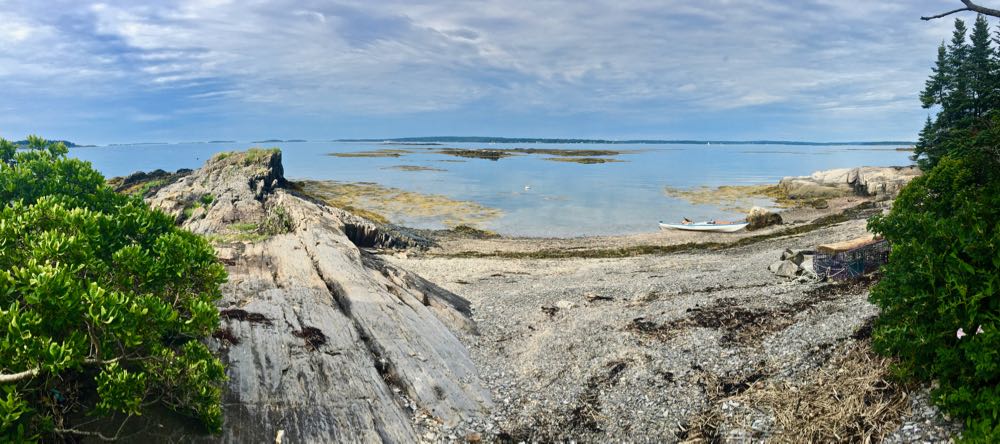
My Life Afloat (by Tom)
I grew up on Middle Bay, the body of water nearest to us here in Maine. It’s a half mile down the road to the town landing. I wake up, get dressed, grab my gear and my kayak, and am on the water in fifteen minutes. I have it good. I know that and am appreciative.
They say that we introverts find being around people draining and need to recharge by being alone. You can’t get much more alone than in a kayak in the middle of the bay. Paddling serves many purposes for me: exercise, socializing (when I go with a group), and meditation (when I am alone). It’s this last function that keeps me coming back day after day to the waters I know so well.
Nature is always near at hand. This morning as I was filming the sunrise from the middle of the bay, an osprey plunged into the water fifty feet away and emerged with a fish. In the two videos below, I document a couple other encounters with local wildlife.
This last video is of a trip I took with my paddling group here in Harpswell. This trip took us to Ragged Island, an isolated island exposed to the open ocean.
So far this year I’ve paddled more than 250 miles. This includes a recent trip I made “Down East” to the Jonesport area, where a friend and I did 55 miles in three days. Many of my trips are much shorter, sometimes only a few miles and no more than a couple hours. But each trip is different and usually I see something that is worth telling Susan about when I get back.
We took a Father’s Day paddle with the three of us and our niece Maia (of Monarch Maia fame).
Fog was an issue for a few weeks in mid-July.
Lookout Point at the end of our road continues to be one of the most photographed scenes in Maine.
In the photos below, you can see some of the places I visited when on my journey Down East.
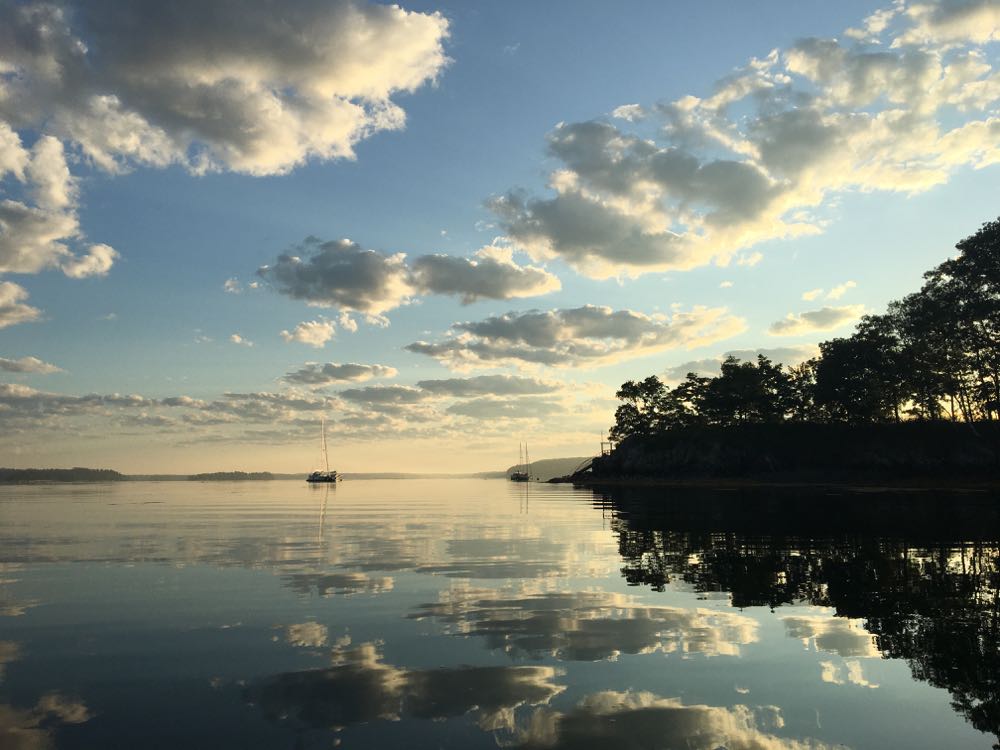
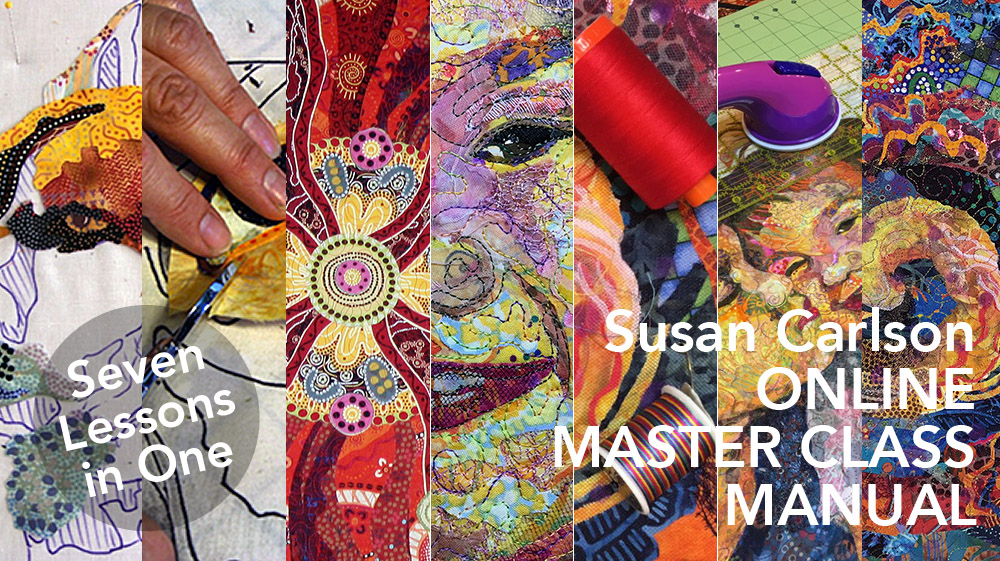


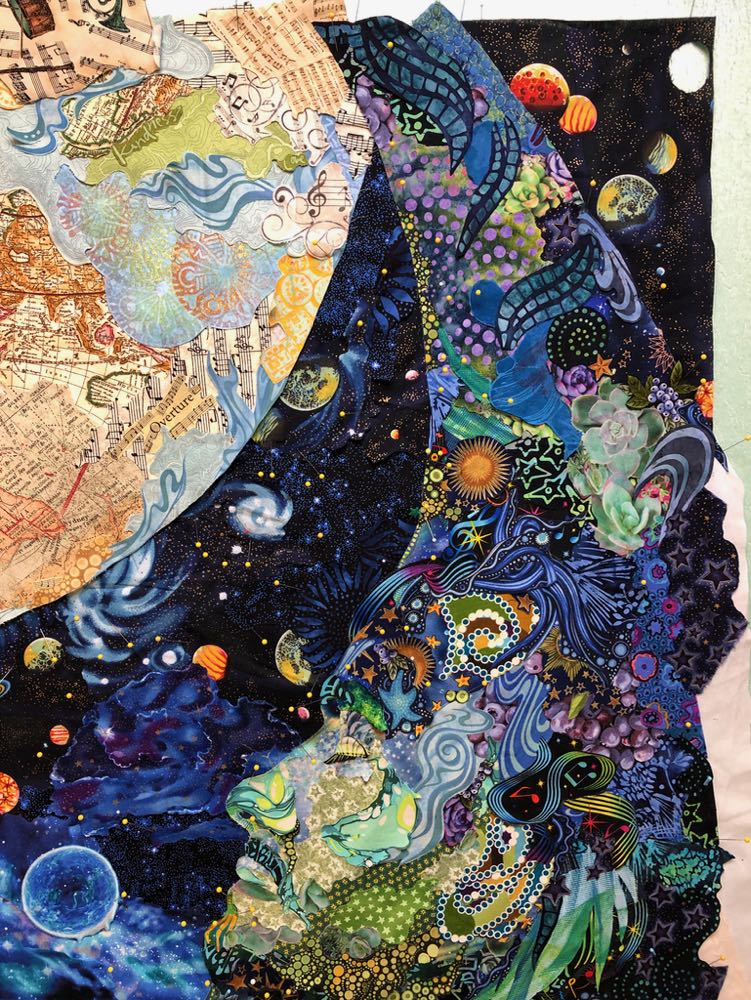
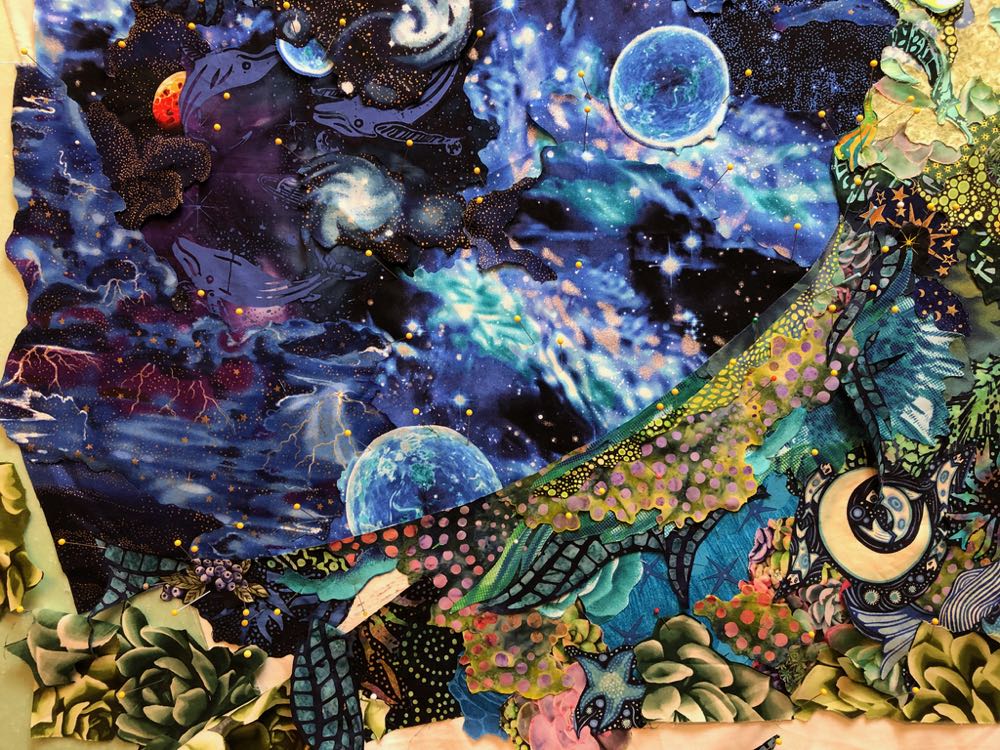
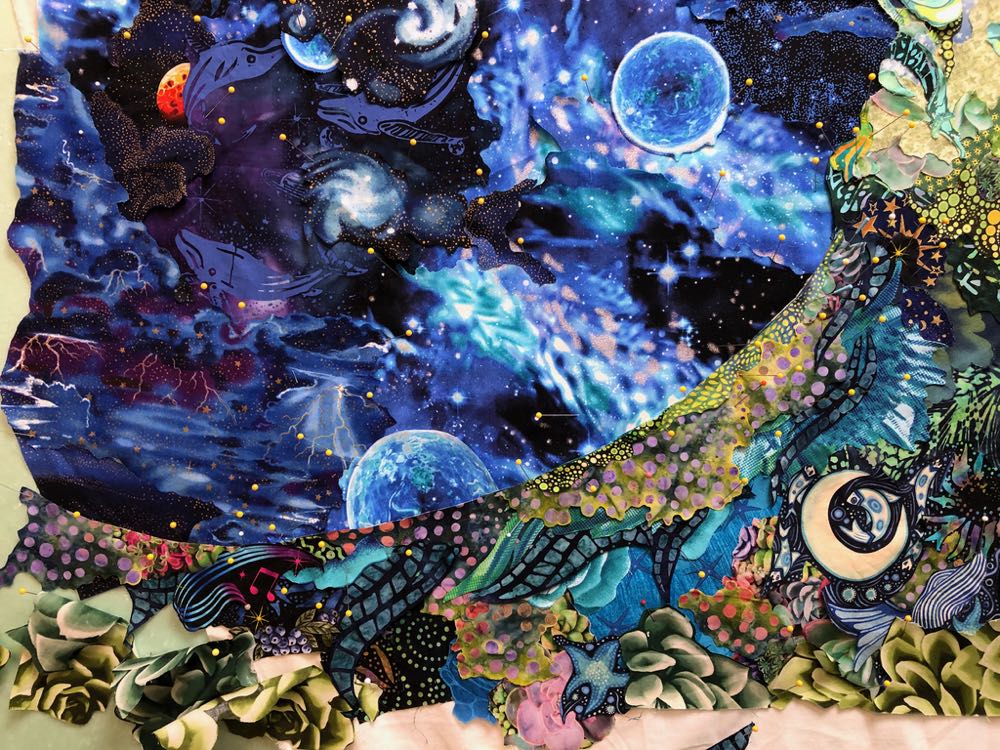
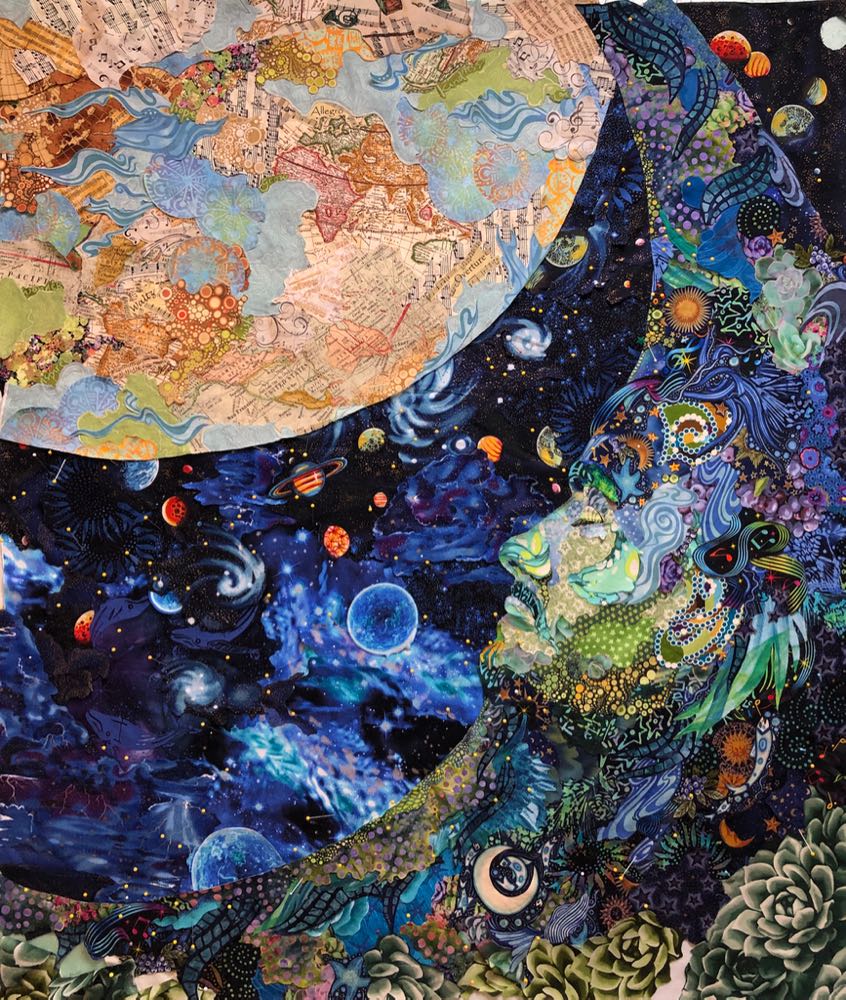
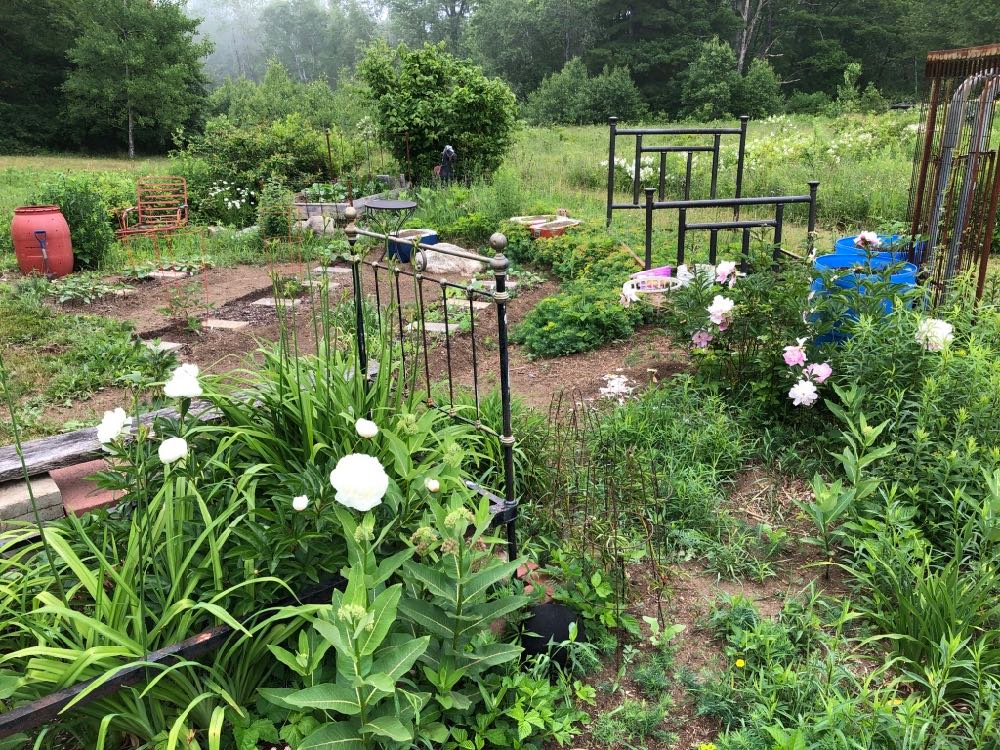











































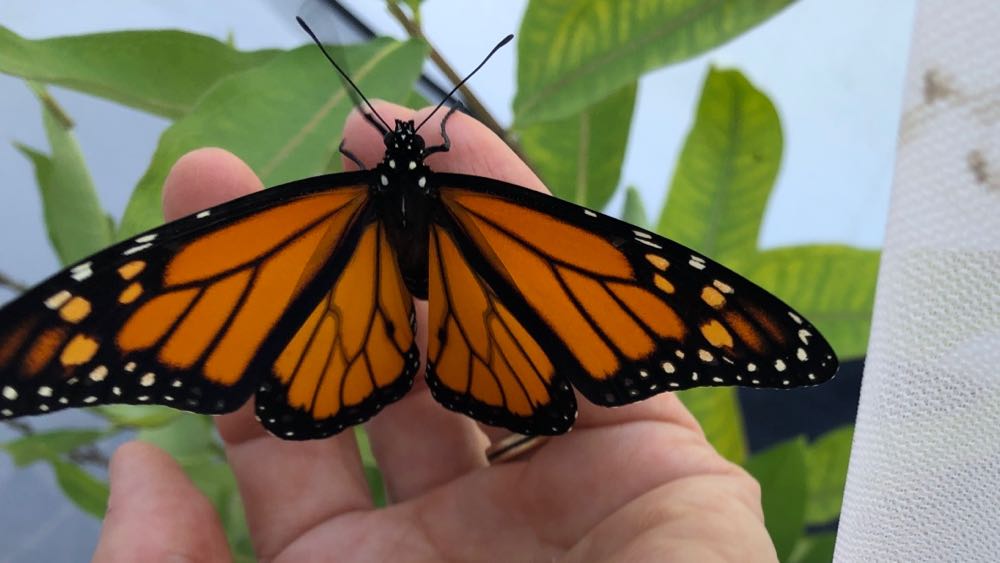

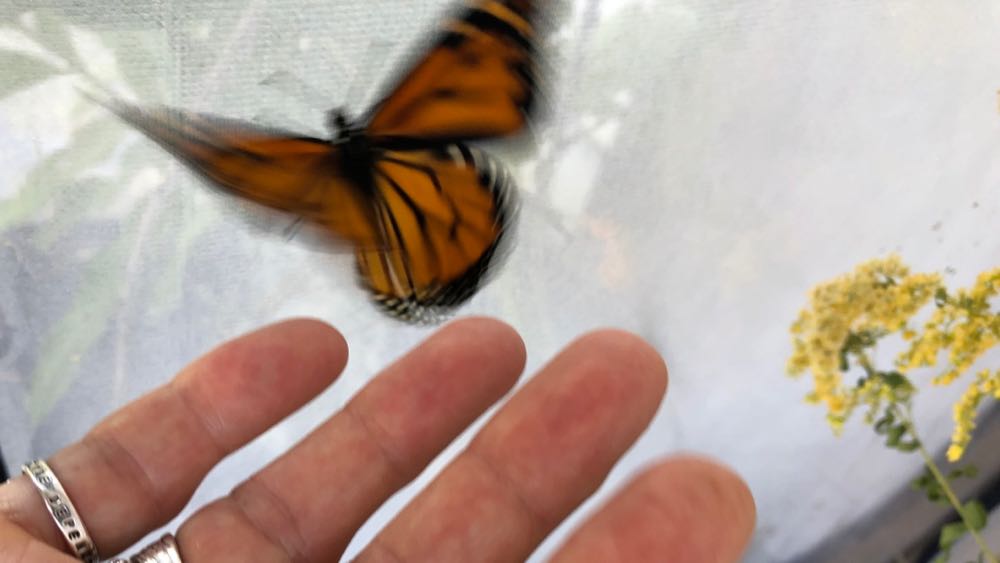






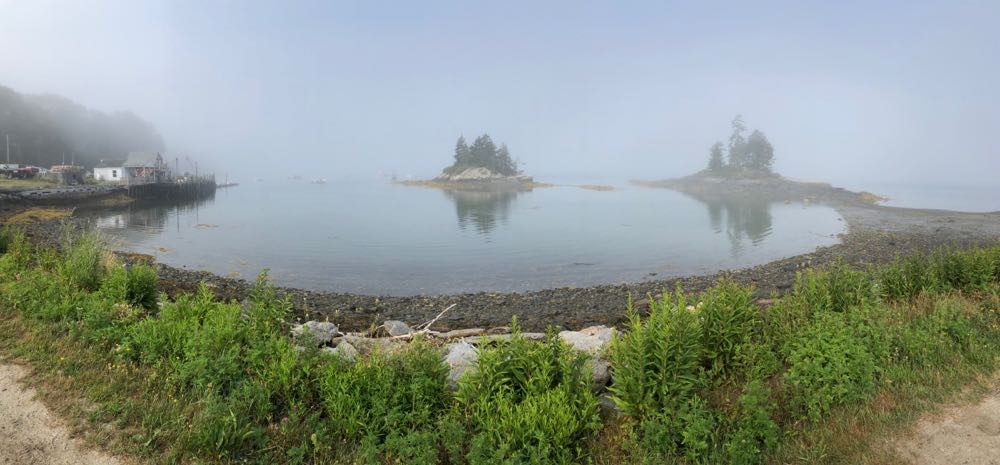


















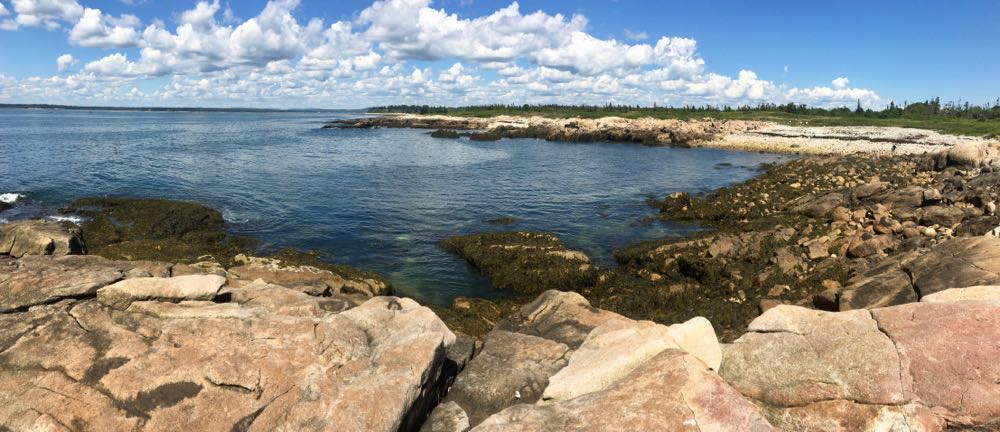
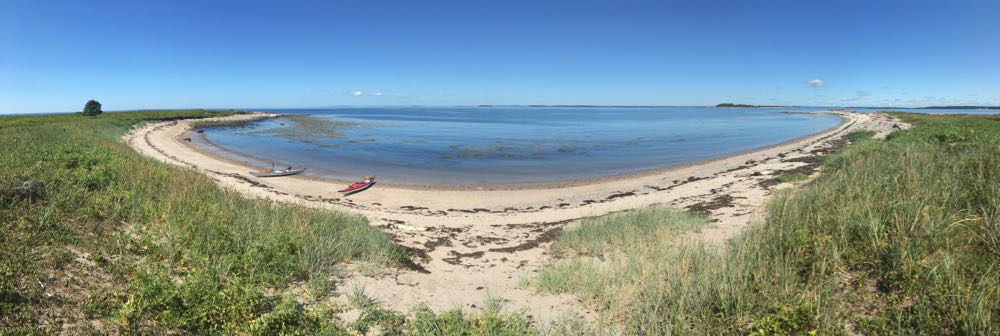
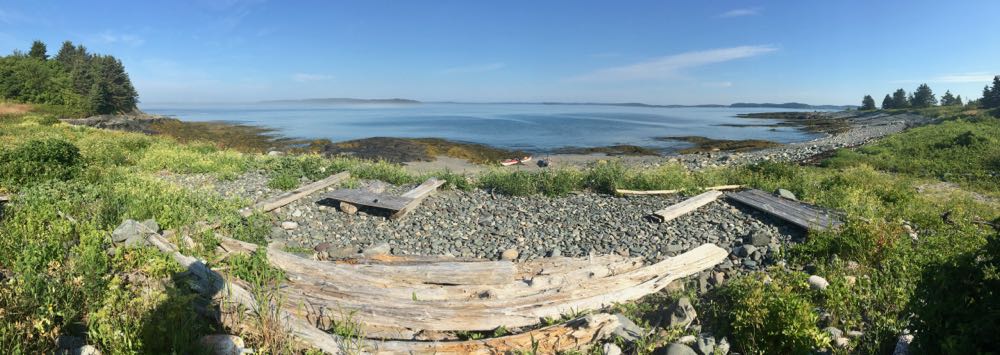




This was a delightful trip on the waterways of Maine, we live in the Pacific NW, just below the Olympic Mountains and Kayak our waterways. Nothing like the scenery you have on the East Coast. Thank you for this journey Tom and always wonderful to see those butterflies ????.
Also Love how Sam’s Moon is coming together.
Thank u for an enjoyable journey in Maine
Loved the butterfly progress
Isn’t nature wonderful
I have my hummingbird feeder and cage of suet to watch
Moxie(the cat) also enjoys the changing scenery on the porch in North Carolina
Onthe porch outside the apartment in NorthCarolina
Tom beautiful scenery. Susan I enjoyed learning how you take care of butterflies. Thank You! Mother Nature is so interesting!!
Have you ever made dandelion jelly Susan? Another good use for the blossoms and it tastes like honey – giving bees a deserved break!
The music in the jellyfish video is very familiar for me and made me smile! Blue Danube walz by Strauss is played on tv stations every year at midnight december 31 to dance into the new year here in Austria!
What an amazing post, Susan and Tom. Thank you for the untold amount of time you put into this so we could experience your beautiful state. I have helped a few black swallowtail butterflies and plant parsley especially for them; alas, no monarchs here. I came for the fabric collage and stayed for the kayaking. The Strauss jellyfish dance was amazing, as were all the calm/exciting paddling along scenes.
Thank you for the updates. Glad you mentioned that you stare at your work. I think I spend more time staring at it than I do working on it! I’ve often wondered if I was the only one.